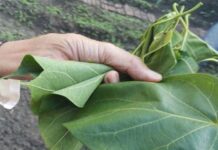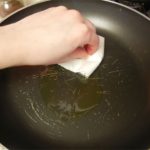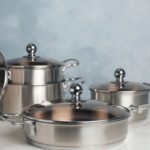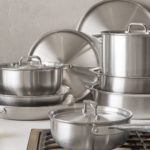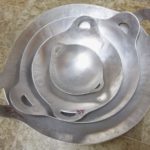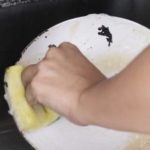Are Non-stick Pans Harmful?
Most cookware nowadays, including pots, pans, and non-stick pans, are coated with a layer of non-stick material. That is Teflon, also known as polytetrafluoroethylene or PTFE. It is a transparent substance that was accidentally discovered in 1938 for military use. But by 1951, Teflon was being used to coat metal pots and pans, creating a smooth, slippery surface that is easier to clean and greatly convenient for cooking.
Non-stick pans help retain the food’s attractive shape and prevent it from breaking. Cleaning them becomes faster and easier as well.
Aside from their convenience, the safety of using non-stick cookware has been a long-studied question by scientists. They determine that Teflon itself, specifically as a coating that meets the quality standards on metal cookware, is not a dangerous concern. Even if this non-stick layer peels off and we accidentally consume small Teflon particles, they will be excreted through the digestive system. And this only happens when the pan is overheated.

Scientific studies confirm that Teflon itself, specifically as a coating that meets the quality standards on metal cookware, is not a dangerous concern. However, scientists also advise against using a non-stick pan for too long, recommending a maximum usage of 2-3 years
According to Tuoi tre, there haven’t been any specific studies analyzing the long-term effects of Teflon-coated pans on human health. Most studies mainly focus on the health impact of substances like PFOA released when Teflon decomposes.
However, with the variety of household items available in the market, it is highly possible that you may mistakenly buy non-stick pans with unreliable coatings that easily peel off. In such cases, these non-compliant non-stick layers can stick to the food. This becomes more serious during high-heat cooking when the temperature affects the non-stick material, leading to decomposition and the production of toxic substances.
Even for non-stick pans that meet the quality standards, scientists advise against using them for too long, recommending a maximum usage of 2-3 years. When cleaning, it is important to use soft utensils to avoid scratching or peeling off the surface, as it would make chemical reactions more likely to occur.
How to Turn a Non-stick Pan into the Non-stick Pan of our Forebears
So, if you don’t want to use a non-stick pan or don’t want to “spend money” on replacing non-stick pans frequently, you can learn how to use the traditional pan that our ancestors used. Follow the instructions shared by the Kitchen Chief Review channel below to transform a non-stick pan into a non-stick pan!

First, heat the non-stick pan on the stove, dry it, and make sure the pan is hot. Check by pouring a spoonful of water into it. When the water boils and dries up as instructed in the picture, it is ready.

Then, pour cooking oil or fat into the pan, wait for the oil to boil and bubble up as shown in the picture

Next, pour the eggs into the pan to start coating (let’s try it with eggs first and then continue with fried fish below).

The image shows the flipped eggs, and the pan is tilted so you can see the natural non-stick smoothness of the pan.

This is the pan bottom after the egg is poured onto a plate. The pan surface is glossy with cooking oil, and no food sticks to it.

The same applies to fried fish. Dry the pan as instructed above, then heat the oil properly according to the instructions. However, note that your fish must be dry, without any moisture. If it’s wet, the moisture will cause oil splattering.

The fried fish is cooked on one side; now you flip it to continue frying. This natural non-stick layer is really effective.

As you can see, there is no fish skin sticking to the finished fried fish.
According to Giadinh.net

























